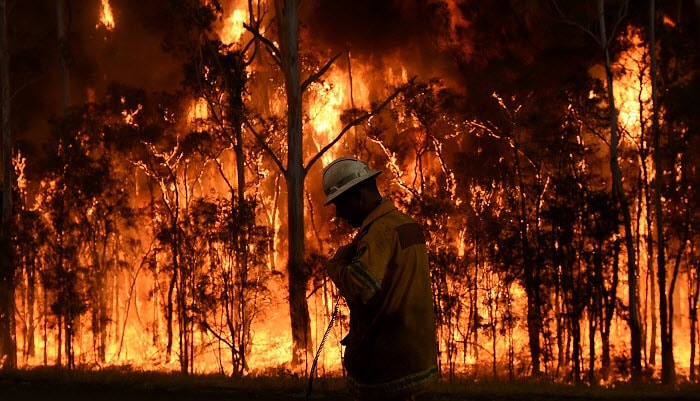Expert Insights: Why Every Homeowner Needs an Extensive BAL Report
Expert Insights: Why Every Homeowner Needs an Extensive BAL Report
Blog Article
Ensuring Bush Fire Security With Appropriate BAL Record Analysis
In the realm of bush fire protection, the precise evaluation of Bushfire Attack Degree (BAL) records stands as a foundation for safeguarding residential or commercial properties against the terrible impact of wildfires. With environmental factors and home features playing considerable functions in identifying the level of threat, an extensive understanding of BAL ratings ends up being critical.
Understanding Bushfire Attack Degree (BAL)
In the world of bushfire protection, understanding the Bushfire Attack Level (BAL) is critical for making certain reliable mitigation techniques. BAL is a system used to measure the possible danger a structure may deal with from a bushfire. It thinks about variables such as the kind of greenery, the incline of the land, the Fire Risk Index, and the Fire Extent Index. Recognizing the BAL score of a property is essential for residential or commercial property policymakers, contractors, and proprietors to implement suitable steps to secure versus bushfire threats.

Relevance of BAL Record Analysis
A crucial aspect in bushfire security planning involves the extensive evaluation of BAL reports to evaluate the prospective dangers and figure out suitable mitigation methods. BAL reports offer important information about the possible impact of bushfires on a property based upon numerous factors such as plant life kind, distance to prospective fire risks, and slope of the land. Evaluating these records with accuracy is vital in creating effective bushfire protection actions customized to the specific danger profile of a residential or commercial property.
Applying Fire Security Measures
Applying efficient fire protection procedures is vital for protecting buildings in bushfire-prone locations. This entails cleaning flammable greenery, such as completely dry leaves and branches, within a certain radius of the property.
Additionally, having a well-kept and sufficient supply of water, such as a storage tank or swimming pool, can help firemens in their initiatives to safeguard the building. It is necessary to have a clear emptying strategy in position and to make certain that all homeowners are acquainted with the treatments. In addition, having firefighting devices easily available, such as hoses and fire extinguishers, can help in dealing with small place fires more info here prior to they escalate. In general, carrying out a combination of these fire protection actions can significantly increase the possibilities of safeguarding click here to read homes during bushfire occasions.
Mitigating Threats in Fire-Prone Locations
To strengthen residential properties versus bushfire threats, a strategic emphasis on mitigating dangers in fire-prone areas is critical. One vital facet of risk mitigation is preserving defensible room around residential properties by getting rid of combustible vegetation, making sure adequate spacing in between frameworks and trees, and using fire-resistant landscaping practices.
In addition, creating or retrofitting structures with fire-resistant products and ensuring correct maintenance of roofs, rain gutters, and exterior cladding can considerably enhance the residential property's durability to bushfires. Creating and practicing a bushfire emergency situation strategy with all residents, consisting of emptying procedures and communication methods, is additionally important in mitigating dangers properly. By embracing an aggressive strategy to take the chance of reduction in fire-prone areas, homeowner can better shield their assets and improve overall bushfire readiness.
Ensuring Residential Property Safety and Resilience
Making certain the safety and security and resilience of residential properties in fire-prone locations requires a steadfast commitment to durable precautionary steps and tactical preparation. Residential or commercial property safety begins with carrying out effective steps to reduce fire threats. This includes maintaining a defensible room around the residential or commercial property by getting rid of flammable plant life, making certain appropriate upkeep of roofs and seamless gutters, and utilizing fireproof structure products. Regular upkeep of firefighting tools, such as tubes and lawn sprinkler, is additionally important to residential or commercial property resilience.
Durability, on the other hand, entails the capacity of a property to endure and recoup from a bushfire. By proactively resolving these elements, residential or commercial property proprietors can better secure their assets and enjoyed ones from the hazard of bushfires.
Verdict
To conclude, making sure bushfire protection via correct BAL record evaluation is crucial for understanding the degree of risk postured by bushfires and carrying out required fire defense steps. By mitigating risks in fire-prone locations and ensuring building safety and resilience, neighborhoods and individuals can much better get ready for and react to bushfire events. It is necessary to prioritize fire security procedures to safeguard lives and property explanation in these risky environments.
In the world of bush fire security, the thorough evaluation of Bushfire Assault Degree (BAL) reports stands as a foundation for securing residential properties against the damaging effect of wildfires (BAL Report). Understanding the BAL rating of a residential property is critical for building policymakers, builders, and proprietors to carry out ideal procedures to secure versus bushfire risks

BAL reports give essential info concerning the prospective influence of bushfires on a property based on various variables such as plant life type, distance to possible fire dangers, and slope of the land (BAL Report). Generally, implementing a mix of these fire protection steps can significantly increase the possibilities of protecting residential or commercial properties throughout bushfire events
Report this page